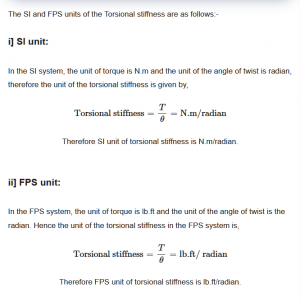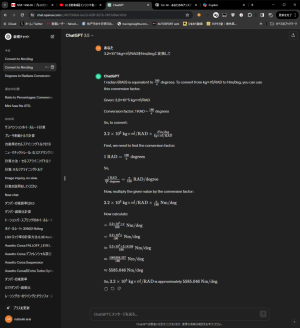I could not find anything on the nsx but I found this list:
and this link
http://www.cadanda.com/CAD_PACE_1__67-75.pdf
Alfa 159 - 31.400Nm/degree
Aston Martin DB9 Coupe 27,000 Nm/deg
Aston Martin DB9 Convertible 15,500 Nm/deg
Aston Martin Vanquish 28,500 Nm/deg
Audi TT Coupe 19,000 Nm/deg
Bugatti EB110 - 19,000 Nm/degree
BMW E36 Touring 10,900 Nm/deg
BMW E36 Z3 5,600 Nm/deg
BMW E46 Sedan (w/o folding seats) 18,000 Nm/deg
BMW E46 Sedan (w/folding seats) 13,000 Nm/deg
BMW E46 Wagon (w/folding seats) 14,000 Nm/deg
BMW E46 Coupe (w/folding seats) 12,500 Nm/deg
BMW E46 Convertible 10,500 Nm/deg
BMW X5 (2004) - 23,100 Nm/degree
BMW E90: 22,500 Nm/deg
BMW Z4 Coupe, 32,000Nm/degree
BMW Z4 Roadster: 14,500 Nm/deg
Bugatti Veyron - 60,000 Nm/degree
Chrysler Crossfire 20,140 Nm/deg
Chrysler Durango 6,800 Nm/deg
Chevrolet Corvette C5 9,100 Nm/deg
Dodge Viper Coupe 7,600 Nm/deg
Ferrari 360 Spider 8,500 Nm/deg
Ford GT: 27,100 Nm/deg
Ford GT40 MkI 17,000 Nm/deg
Ford Mustang 2003 16,000 Nm/deg
Ford Mustang 2005 21,000 Nm/deg
Ford Mustang Convertible (2003) 4,800 Nm/deg
Ford Mustang Convertible (2005) 9,500 Nm/deg
Jaguar X-Type Sedan 22,000 Nm/deg
Jaguar X-Type Estate 16,319 Nm/deg
Koenigsegg - 28.100 Nm/degree
Lambo Murcielago 20,000 Nm/deg
Lotus Elan 7,900 Nm/deg
Lotus Elan GRP body 8,900 Nm/deg
Lotus Elise 10,000 Nm/deg
Lotus Elise 111s 11,000 Nm/deg
Lotus Esprit SE Turbo 5,850 Nm/deg
Maserati QP - 18.000 nm/degree
McLaren F1 13,500 Nm/deg
Mercedes SL - With top down 17,000 Nm/deg, with top up 21,000 Nm/deg
Mini (2003) 24,500 Nm/deg
Pagani Zonda C12 S 26,300 Nm/deg
Pagani Zonda F - 27,000 Nm/degree
Porsche 911 Turbo (2000) 13,500 Nm/deg
Porsche 959 12,900 Nm/deg
Porsche Carrera GT - 26,000Nm/degree
Rolls-Royce Phantom - 40,500 Nm/degree
Volvo S60 20,000 Nm/deg
Audi A2: 11,900 Nm/deg
Audi A8: 25,000 Nm/deg
Audi TT: 10,000 Nm/deg (22Hz)
Golf V GTI: 25,000 Nm/deg
Chevrolet Cobalt: 28 Hz
Ferrari 360: 1,474 kgm/degree (bending: 1,032 kg/mm)
Ferrari 355: 1,024 kgm/degree (bending: 727 kg/mm)
Ferrari 430: supposedly 20% higher than 360
Renault Sport Spider: 10,000 Nm/degree
Volvo S80: 18,600 Nm/deg
Koenigsegg CC-8: 28,100 Nm/deg
Porsche 911 Turbo 996: 27,000 Nm/deg
Porsche 911 Turbo 996 Convertible: 11,600 Nm/deg
Porsche 911 Carrera Type 997: 33,000 Nm/deg
Lotus Elise S2 Exige (2004): 10,500 Nm/deg
Volkswagen Fox: 17,941 Nm/deg
VW Phaeton - 37,000 Nm/degree
VW Passat (2006) - 32,400 Nm/degree
Ferrari F50: 34,600 Nm/deg
Lambo Gallardo: 23000 Nm/deg
Mazda Rx-8: 30,000 Nm/deg
Mazda Rx-7: ~15,000 Nm/deg
Mazda RX8 - 30,000 Nm/degree
Saab 9-3 Sportcombi - 21,000 Nm/degree
Opel Astra - 12,000 Nm/degree
Land rover Freelander 2 - 28,000 Nm/degree
Lamborghini Countach 2,600 Nm/deg
Ford Focus 3d 19.600 Nm/deg
Ford Focus 5d 17.900 Nm/deg











